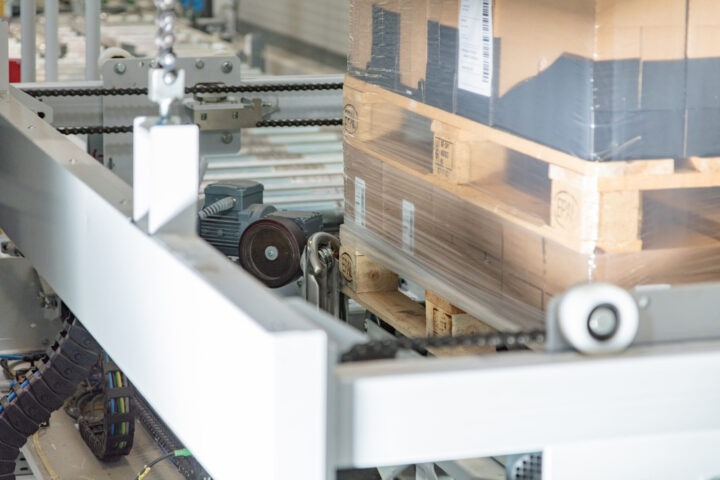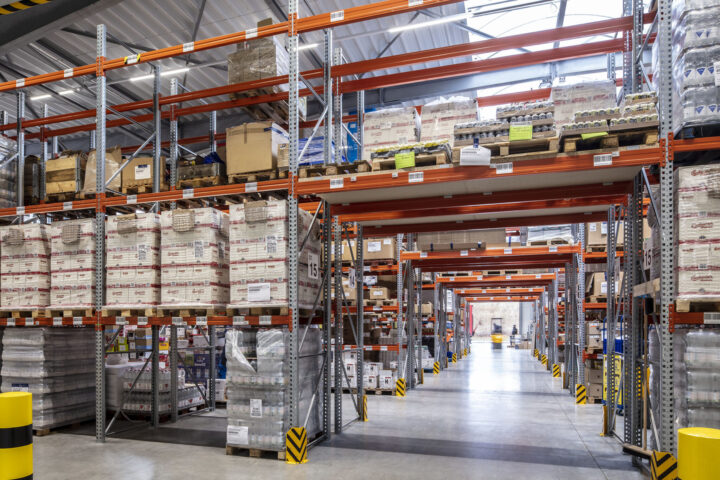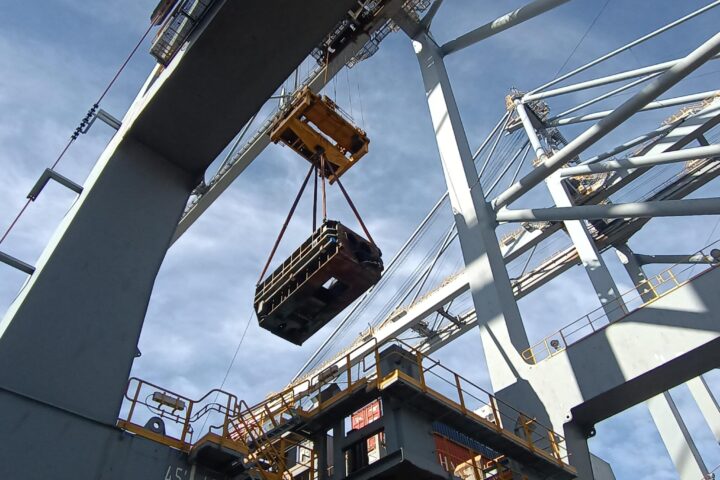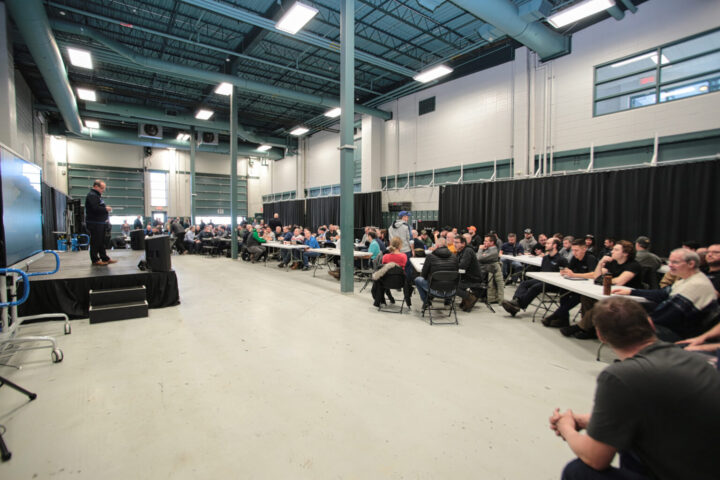There is nothing like harnessing the energy of a user conference to outline a bold vision for a transforming world. In that vein, Blue Yonder’s ICON 2025 didn’t disappoint. Hosted at the Gaylord in Nashville the week harnessed the theme of machine speed and precision across connected supply chain processes. As you would expect, major emphasis was placed on the role of AI to deliver accurate, timely, and improved decisions at all points of supply chain processes using a combination of human-to-AI agent and agent-to agent collaboration. Given the company’s position in the market, the company is capable of executing the business strategy that delivers their vision to customers.

What became quite clear over the course of the week was more evidence that the elephant is definitely still in the room, and ICON demonstrated that the rationale for supply chain modernization isn’t about a solution provider just trying to sell wares. Supply chain modernization must occur in today’s digital-centric world. We have been seeing the need for significant modernization (i.e., transformation) dating back years now. Supply chains need systemic change that must occur via communication, data sharing, and process modernization delivered through the use of orchestrated, interoperable AI agents and data fabrics across multiple enterprises. Whether it’s the shock of a pandemic, geopolitics, or global trade wars, the pace and complexity of volatility in today’s world is beyond the means of traditional supply chain business practices. The past approach of limited, incremental improvements is not sufficient for today’s supply chain needs. We are a quarter of the way into the 21st century and many supply chain practices are still behind the times. As people in such a consumer-heavy country (topic for another time) as the US, we experience it daily.
First, the News
Across the week, Blue Yonder leadership consistently mentioned their commitment to an artificial intelligence (AI) “innovation shockwave” and “avalanche.” As Blue Yonder Chief Executive Officer Duncan Angove mentioned in his keynote, the shockwave was the culmination of $2 billion investment the company began making about three years ago. He also noted that the company had rewritten 28 different planning applications onto one platform. At ICON, Blue Yonder unveiled a number of new products and services, as well as announcing a major acquisition. The products and services were focused around the idea of cognitive solutions delivered by the Blue Yonder Platform that is built on Snowflake’s AI data cloud. As defined by Blue Yonder, the company’s cognitive solutions have the following characteristics:
- Cloud-native architecture: All cognitive applications are cloud-native, ensuring they are modern and “always current,” providing a continuous stream of business value without “forklift upgrades”.
- Platform delivered: They are built on and sit in the company’s platform and Snowflake’s AI data cloud.
- Interoperable and end-to-end: The applications are designed to work together as one system, supporting end-to-end supply chain processes.
- Multi-enterprise: The One Network acquisition, announced in 2024, extends capabilities across multiple companies and tiers in the supply chain.
- Unified data model: Applications are built on a common data model within the Snowflake AI Data Cloud, enabling concurrent demand and supply planning, unified allocation and replenishment, unified returns management, and unified execution decisions.
- Intelligent and agentic: The company indicated that its cognitive solutions are inherently intelligent and agentic, leveraging Blue Yonder’s history as an early adopter of machine learning and other forms of AI.
- Refined user experience: Integrating collaborative UX as a core tenet of solution development, emphasizing role-based interfaces, mobile-centric design and access, and the addition of multi-modal interaction.
Specifically, the company announced the release of five, new generative AI agents:
- Inventory Ops Agent: This agent helps planners match supply with demand by guiding attention to mismatches, exceptions, and systemic issues. It includes root cause diagnosis and alternative action recommendation. It also highlights plan adjustments and communicates changes based on real-time conditions.
- Logistics Ops Agent: The solution helps logistics teams monitor conditions and recommend route changes to prevent delivery disruptions, as well as automate appointment scheduling changes. It also identifies ways to optimize transport costs, on-time deliveries, and emissions.
- Warehouse Ops Agent: The agent coordinates and manages highly interdependent tasks, including labor reallocation, supply/demand-based predictive warehouse layouts, outbound risk identification, trailer docking and unloading optimization, and risk mitigation associated with on time in full (OTIF) compliance.
- Network Ops Agent: This enables supply chain monitoring across a multi-enterprise network. The agent automates order confirmations, stockout resolutions, carrier assignments, predictive ETA updates, container prioritizations, appointment re-scheduling and performance analysis. Users can have multi-modal interactions with the agent to gain real-time insights and collaboratively orchestrate problem resolutions.
- Shelf Ops Agent: Thie solution enables planners to perform at-scale planogram edits using natural-language interactions. Actions such as swapping a product with another in many planograms, updating planograms in a project, analyzing performance, and creating custom reports can be performed quickly.
In a nod to helping customers more quickly and effectively adopt and scale this advanced, composable technology, Blue Yonder also announced a layer of planning and implementation services and solutions. The company’s Agent Advisory Activation Service is designed to get customers successfully running agents in 6-12 weeks. Blue Yonder, Snowflake and RelationalAI also co-announced the development of a supply chain knowledge graph that can use unstructured data to record the structure of business relationships and processes in human-readable form. Finally, Microsoft also joined the keynote to announce that Blue Yonder is using Azure AI Foundry as the core development platform across its entire product suite to design, customize, and manage apps and agents at scale.

In addition to cognitive solutions, another main theme was a continued commitment to sustainability. Blue Yonder’s Chief Sustainability Officer Saskia van Gendt joined CEO Angove on stage to announce that the company announced had acquired UK-based Pledge Earth Technologies. The company provides supply chain teams and logistics service providers (LSPs) with accredited emissions measurement and reporting capabilities. In a nod to its end-to-end supply chain strategy, Blue Yonder will now be able to help its customers automate the collection and exchange of shipment data from logistics suppliers to facilitate accredited and traceable emissions calculations across all transport modes, including air, inland (e.g., truck, rail, barges), and sea. Blue Yonder customers can extend their applicable Blue Yonder solutions to include this new capability, allowing them to receive emissions reporting that is in conformance with the Global Logistics Emission Council (GLEC) framework, developed by the Smart Freight Center (SFC), and aligned with International Organization for Standardization (ISO) 14083: Greenhouse gases.
Doubling Down on Integrating AI into Market Strengths
End-to-end, interoperable technology strategies aren’t new, per se, but few companies are positioned to actually carry them out. While the supply chain market is fiercely competitive, market perception is that if it can be done, it requires solutions built upon both breadth and depth of expertise. Blue Yonder is an acknowledged leader across a broad set of supply chain processes as well as within them. And while most every company out there is investing in AI, Blue Yonder is noted for its history with forms of it such as machine learning, going back to JDA’s 2018 acquisition and 2020 rebranding based on that capability.
The change in how software is built and can be consumed also plays in Blue Yonder’s favor. As the use of monolithic systems diminishes, rip-and-replace upgrades, a non-starter for many, aren’t necessary. That doesn’t diminish the widespread challenge of technical debt. However, composable architecture, the basis for most modern software, enables a much more measured approach to adding and connecting functionality. It can be done using managed steps that aren’t limited to being incremental, as they have been in the past. As companies undertake a journey on supply chain modernization, Blue Yonder assists the transformation using the SADA loop concept (See, Analyze, Decide, Act). The SADA loop was adapted from the military’s OODA loop (observe, orient, decide, act), developed by an officer in the US Air Force to improve aerial combat outcomes. Both concepts are bult upon the idea that speed for the sake of speed doesn’t always dictate winning, and that it must be delivered with timing and context to be effective. These concepts underpin how composable software can be applied.
To understand what the SADA loop concept looks like in execution, supply chain teams can take a look at the results from Blue Yonder’s Composable Journey, launched at the beginning of 2024. The Composable Journey is an implementation and transformation methodology for customers to undertake tailored digital modernization. It is designed to digitally modernize supply chains via incremental steps, taken at the pace of the customer, by leveraging composable microservices and their interoperability. Blue Yonder reported that since the release of the program, the company has already completed more than 200 instances with a 12x average jump in business ROI.
Navigating Potential Risks
Holistic interoperability does present challenges, both for the provider and users of those solutions. Blue Yonder will have to navigate those waters as it helps its customers modernize. Even as the company focuses on helping customers address market uncertainty, that same volatility impacts the ability of providers to plan for long-term investment. Determining what functionality to create, as well as what existing capabilities to deprecate, will need to be executed with precise timing and excellence, as competitors are also actively pushing the market to modernize. In volatile markets, mistakes have a compounded negative impact on market share.
For their customers, Blue Yonder will need to be on point as to how it helps them modernize. What they are suggesting is step change to generally risk-averse markets. Moving from entrenched fragmentation to multi-enterprise, intelligent interoperability is necessary, yes, but it’s neither simple nor inexpensive. The technology is there, frankly, but like with most digital transformation concepts, the ability of users to organize people and data correctly is the critical component, as software is the enabler. The sheer volume of expected change could be seen as overwhelming. The pace of the expected return on Blue Yonder’s investment will also need to account for how quickly the market can move to adopt change.
At the same time, Blue Yonder must deal with an array of competitors that range from those using process-specific best-of-breed to holistic solutions approaches. Additionally, Blue Yonder will need to determine how to best integrate its partners in the customer journey. Some of those partners have developed core, vertical expertise across decades and will need to better understand how they, too, benefit from the Composable Journey. Unfortunately, the partner piece of the event was held the day I travelled home, so I don’t have the specifics of the Blue Yonder strategy on this front. However, that’s something I briefly touched on with Angove and will be sure to follow up on. He’s very aware of this issue, certainly, and understands the need to get it right.
The executive team at Blue Yonder provided ample evidence that they are all pulling in the same direction. It seems there has been ample evidence of the benefit of success. Overall, the event demonstrated that Blue Yonder is positioning itself with a bold, transformative strategy built on a modern, unified, AI-driven platform, aiming to deliver step-change value in a volatile world, despite the inherent challenges of large-scale customer transitions.
 By Mike Guilfoyle Vice President ARC Advisory Group
By Mike Guilfoyle Vice President ARC Advisory GroupFor more than two decades, Michael has assisted organizations, including numerous Fortune 500 companies, in identifying and capitalizing on growth opportunities and market disruption presented by the effects of digital economies, energy transition, and industrial sustainability on the energy, manufacturing, and technology industries.
Michael’s expertise is in market analysis and strategy development for companies facing transformational market drivers. At ARC, he leads a team that researches the impact of energy transition and sustainability on industrial organizations. Mike is also an acknowledge thought leader in industrial digital transformation. He spends considerable time working with clients on the human side of sustainability and digital transformation and their impact on workforce skills development, knowledge transfer, and change management. Michael is also a co-founder and steering committee member of the Digital Transformation Council.
Michael has held multiple senior management positions in business and market strategy. Just prior to joining ARC, he was a key contributor on Oracle’s global industry strategy team for utilities. During that time, he spearheaded many strategic planning and go-to-market initiatives covering topics such as business model evolution, advanced distribution management, operational analytics, distributed energy, mobility, asset management, workforce modernization, and knowledge management.












